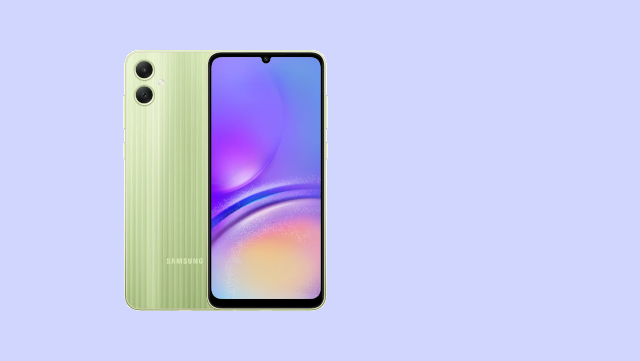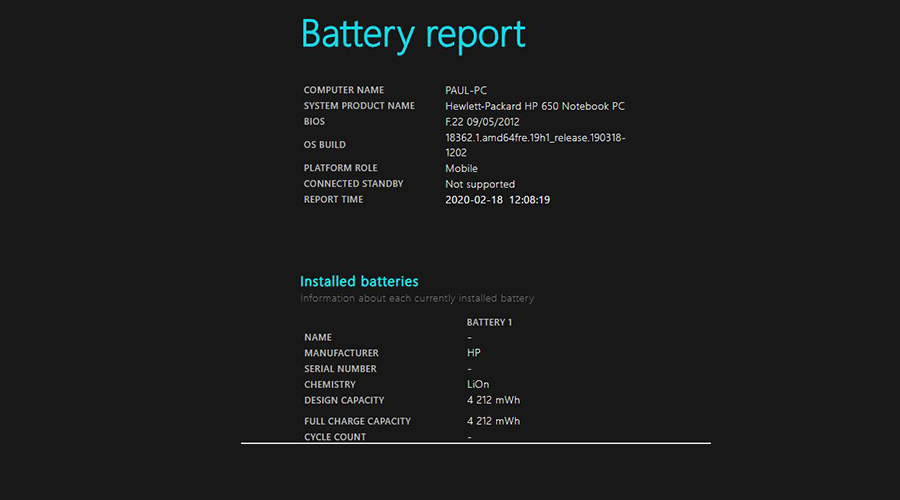
Full review of the Samsung Galaxy A05s : Performance, battery life, camera...
On the outside it looks like a Galaxy S24, it has the same interface as an S24, but it's a Galaxy A05s. With competition coming in from China, does Samsung's entry-level model still have any appeal? On what points is the Korean giant still ahead? Find out in this test.
You only have eyes for the S series, but it's the smaller models like this Galaxy A05s that sell the most worldwide. Samsung has the know-how not only in screens, but also in processors. What's more, the South Korean manufacturer is often praised for the quality of its screens and even its photo sensors. It has long mastered image processing, with the appropriate artificial intelligence. But is it still worth buying a Samsung phone for less than €170 compared with Chinese phones?
Technical data
|
Screen |
LCD PLS |
|
Processor |
Qualcomm Snapdragon 680 |
|
OS |
Android 14 + One UI 6.1 |
|
RAM |
4 GB |
|
Storage |
64 GB |
|
microSD |
Yes (up to 1 TB) |
|
Main sensor |
- 50 MP wide-angle (f/1.8) |
|
Selfie sensor |
50 MP SELFIE SENSOR |
|
Battery |
5000 mAh |
|
Biometrics |
Button fingerprint scan / facial recognition |
|
Water resistance |
|
|
Wireless
|
- Wi-Fi 802.11 ac (Wifi 5) |
|
Network |
- 4G/4G+/4G LTE |
|
Connectivity |
USB Type-C |
|
Dimensions |
168 x 77.8 x 8.8 mm |
|
Weight |
195 g |
Price and availability
The Samsung Galaxy A05s is available at a recommended retail price of €169. The phone comes in a single configuration with 4GB of RAM and 64GB of storage. All you have to do is choose between silver, black or lime (model tested here).
Below the €170 mark, the competition is stiff. There are older models like the Honor 90 Smart, Motorola G34 5G, Poco C65, Redmi 13C and Realme C55... Comparisons are simple: whatever the model, the competition has a lot to offer in terms of storage memory.
Design
In the past (less than 5 years ago), top-of-the-range smartphones stood out from the crowd thanks to their distinctive, refined design. Today, Samsung is adopting a top-down harmonisation strategy. In other words, the visual differences between the premium S24 model and the more affordable Galaxy A05s are minimal. This uniformity of design is of particular benefit to consumers on a limited budget.
The aesthetic differences between the A04s and its predecessors were already minimal, but between the Galaxy A05s and the A04s they are almost imperceptible. The latter loses just 1 gram and a few tenths of a millimetre in width and thickness compared with the previous generation. As a result of the larger screen, its length has increased by 3.7 millimetres. The photo modules protrude just half a millimetre from the body. Strangely enough, this is better than a Galaxy A15 or even a Galaxy A35, for example.
With a screen that occupies almost the entire front panel, the back of a smartphone becomes the main styling element. In this Galaxy A05s series, the design remains unchanged. The photo sensors are still aligned vertically. The iridescent coating sparkles in the slightest light.
Unlike the higher-end models in the Galaxy A series, plastic is everywhere, both as the frame and the back. Frame and back are the same colour. Like its S24 siblings, the SIM or SIM2/MicroSD card slot is located at the top of the left-hand edge, while the volume and power buttons are on the right. The grip is pleasant.
The top edge features only a microphone, identifiable by a pinhole. The bottom edge is reminiscent of the phone's entry-level position, with a 3.5mm jack for wired headphones. Alongside the jack is another microphone, a USB Type-C port and a grille for the main speaker.
Like the previous generation, the Galaxy A05s retains a notch around 7mm in diameter, but less flared. The side edges are similar to those of the top model, measuring around 2 millimetres, but the ‘chin’ under the screen is significantly wider, reaching around 6 millimetres. As with the Galaxy A15, there is no waterproof certification, so beware of water. Despite this, the Galaxy A05s stands out for its good repairability, with a score of 8.8 out of 10.
Screen
If there's one area where Samsung never lets us down, it's the screen. This is hardly surprising, given that the Korean manufacturer is also a leader in the production of panels. On this phone, which looks like a Galaxy S24, there's no expensive AMOLED panel, but a cheaper PLS LCD panel. A screen using this technology will be slightly brighter and have better viewing angles than a conventional IPS panel.
Unlike the top models in the Galaxy A range, Samsung is offering a screen at least as large (6.7 inches) as the competition. This is all the more remarkable given that its predecessor, the Galaxy A04s, made do with a modest 6.5-inch panel. Even better, the increase in display diagonal is accompanied by a much higher definition than before. With a matrix of 1080 x 2400 pixels (FHD+), Samsung is crushing all its direct competitors. Even its big brothers, the Galaxy A25 and A25, have a lower definition.
Unsurprisingly, with a slightly larger screen and much greater definition, the resolution rises from 270 pixels on the Galaxy A04s to 393 pixels per inch on this Galaxy A05s. Honor, Motorola and Xiaomi are all in the doldrums. In terms of rendering, in the absence of OLED, colours and contrast aren't great. The screen isn't bright. Outdoors, it's a disaster. But on a phone costing less than €170, can you really be picky?
The settings are spartan. By default, the screen is calibrated in adaptive ‘motion fluidity’. In other words, the display is refreshed between 60 and 90 Hz depending on the content. This is slightly worse than a Motorola G34 (120 Hz), but the phone is not designed for fast games. You can switch to standard (60 Hz) to save a little battery power. Nothing else. There are no colour temperature settings or colour profiles. In this respect, the Galaxy A05s doesn't do as well as its rivals... but what's the big deal about a budget phone?
Interface and connectivity
There's only one step from the screen to the graphical interface. This Samsung Galaxy A05s runs Android 14, also known as Upside Down cake. This is the latest version of the operating system. For Android 15, we'll have to wait until at least October 2024, since compatibility with the OneUI 7 overlay still requires some fine-tuning. Also, it's still OneUI 6.1 on this phone.
This overlay is a model of its kind, and perhaps even a criterion for buying a phone in order to build customer loyalty. Clear, colourful ergonomics with plenty of options. At first glance, there's nothing different between a modest Galaxy A05s and a luxurious Galaxy S24...
But for the price of a Galaxy S24, you get 5 Galaxy A05s. Not the same engine, not the same finish and not the same features. As a result, the wealth of functions linked to artificial intelligence on the premium model disappears on this smartphone.
In terms of connectivity, Samsung has made a few savings to get its phone under the €170 mark. Of course, there's no latest-generation Bluetooth, so you'll have to make do with version 5.1 of the wireless protocol. The same goes for WiFi. No WiFi 6, just 5 (AC). The most notable difference with some of our competitors is in the mobile phone networks. Unlike the Motorola G34, 5th generation (5G) networks are not supported.
Performance
As far as the platform is concerned, we shouldn't expect exceptional performance from a phone in this category, and the Samsung Galaxy A05s is no exception. It's powered by Qualcomm's Snapdragon 680, a SoC that's been around since 2021... It's not a bad processor, but with 4GB of RAM, you shouldn't expect miracles. During normal use, downloading applications is a little slow, and updating several applications at once can be laborious. Even the OneUI interface is cumbersome when it comes to juggling several apps or just accessing settings when apps are in the background...
However, Samsung has copied the Chinese manufacturers by recovering RAM from storage memory. This swapping technique is activated by default on 4 GB, but it can be reduced to 2 GB. Everything is done in Settings > Device Maintenance > Memory > RAM Plus. Our battery of tests wasn't easy, as the Samsung Galaxy A05s often froze. On the basic GeekBench, the CPU or GPU results are even weaker than the already poor Samsung Galaxy A15 5G.
On office tasks (Work 3), this phone limits the damage, but it's still low, barely better than the Poco C65 or Realme C55. On the generalist Antutu benchmark, the Samsung Galaxy A05s is 30% less muscular than the already puny Galaxy A15 5G. And let's not forget the gaming benchmarks. You can play Candy Crush, but not complex video games.
So don't count on this Samsung Galaxy A05s to install a lot of video games or store a lot of multimedia files. Storage on an external microSD card is therefore more than recommended.
Audio
Two speakers are used to broadcast sound. A tiny speaker hidden behind the imperceptible slot above the selfie camera. This delivers barely 20% of the overall sound volume. There's also a speaker to the right of the USB-C port. Together, they deliver a sound that lacks the power of a Poco C65 or Motorola G34. On the other hand, the sound is fairly well balanced from treble to bass. At full volume, the high frequencies sometimes crackle, but this is acceptable for a phone at this price.
What do entry-level phones have that premium phones don't? The jack socket for plugging in earphones or wired headphones, of course! The Samsung Galaxy A05s is no exception. You can also listen to music or watch videos with headphones or a Bluetooth headset. You'll even need them if you want to enjoy Dolby Atmos effects (4 profiles available) or play games with a more immersive sound experience. SBC or AAC codecs are pre-installed, but SCC (HD with Samsung devices) or LHDC codecs also work. Beware, however, that sound diffusion can sometimes stop for a few milliseconds with HD music. This is probably due to the SoC and RAM having a bit of trouble keeping up.
Battery and charging
Samsung has equipped its Galaxy A05s with a 5,000 mAh battery, a standard allocation on today's phones. In a test simulating intensive office use with Work 3, the battery lasted 10 hours and 42 minutes. That's equivalent to around a day and a half's autonomy in conventional use. Although this performance is similar to that of the Galaxy A25 5G or Galaxy A35 5G, it is 34 minutes down on its predecessor.
With such a weak SOC, we might have expected more ascetic consumption. The competition does much better in this respect. The Poco C65 offers almost 3 hours more, while the Motorola G34 5G offers over 1 hour 40 minutes more. Which goes to show that a low-powered SoC doesn't always mean a longer battery life. Of course, as the phone is not gaming-oriented, you can switch the refresh rate to standard (60 Hz) and energy-saving mode. This will give the smartphone around 1 hour's extra battery life.
Unlike Chinese manufacturers, the Korean manufacturer has opted for economy: no charger is included in the box. There is, however, a USB type C male cable. The Galaxy A05s accepts a maximum charge of 25W... like its Galaxy A brothers. Thanks to this fast charger, it takes 2.5 hours to fully recharge. In just 10 minutes, you recover 20% of your battery.
However, Samsung is still lagging behind on fast charging for its entry-level models. Motorola G34 5G and Realme C55 offer much faster charging... and provide a charger. Only the Poco C65 / Redmi 12C has a comparable charging time.
Fast charge (25 W) :
- 0 minutes: 0
10 minutes: 20
20 minutes: 39
30 minutes: 50
40 minutes: 54
50 minutes : 60
1 hour: 62
2 hours: 86
2 hours 30 minutes: 100
Photo and video
Photography is generally a strong point of Samsung phones. As one of the main suppliers of sensors for many smartphone manufacturers, the brand is eagerly awaited. Our tests on the SoC were mediocre, suggesting weaknesses in image processing. While the sensor layout remains identical to a Galaxy A55 or even S24, the sensors are nothing like it.
Here are the detailed specifications:
- A 50-megapixel main sensor with an f/1.8 aperture, offering up to 10x digital zoom.
A 2-megapixel portrait sensor with an f/2.4 aperture.
A 2-megapixel macro sensor with an f/2.4 aperture.
A 13-megapixel front-facing sensor with an f/2 aperture.
The first thing to note is that the Korean manufacturer has not made any technological changes to the previous generation. In fact, it's very similar to the top-of-the-range Galaxy A15 or even the Galaxy A25 5G. The main sensor is the same on these 3 phones, with only the definition changing on the portrait sensor. A 2-megapixel macro sensor already seemed like a gimmick, but a 2-megapixel portrait sensor... What's the point? In terms of specifications, the competition is no better.
With the main sensor, at 1x, daytime photos are relatively decent: sharp details, acceptable contrast. However, we can already see that colours lack saturation and that brightness is low despite the large aperture of the sensor and the use of pixel binning. As soon as you increase the zoom, the digital processing smoothes out the photos excessively. The SoC's weaknesses in artificial intelligence have a lot to do with this.
Source : phonandroid







